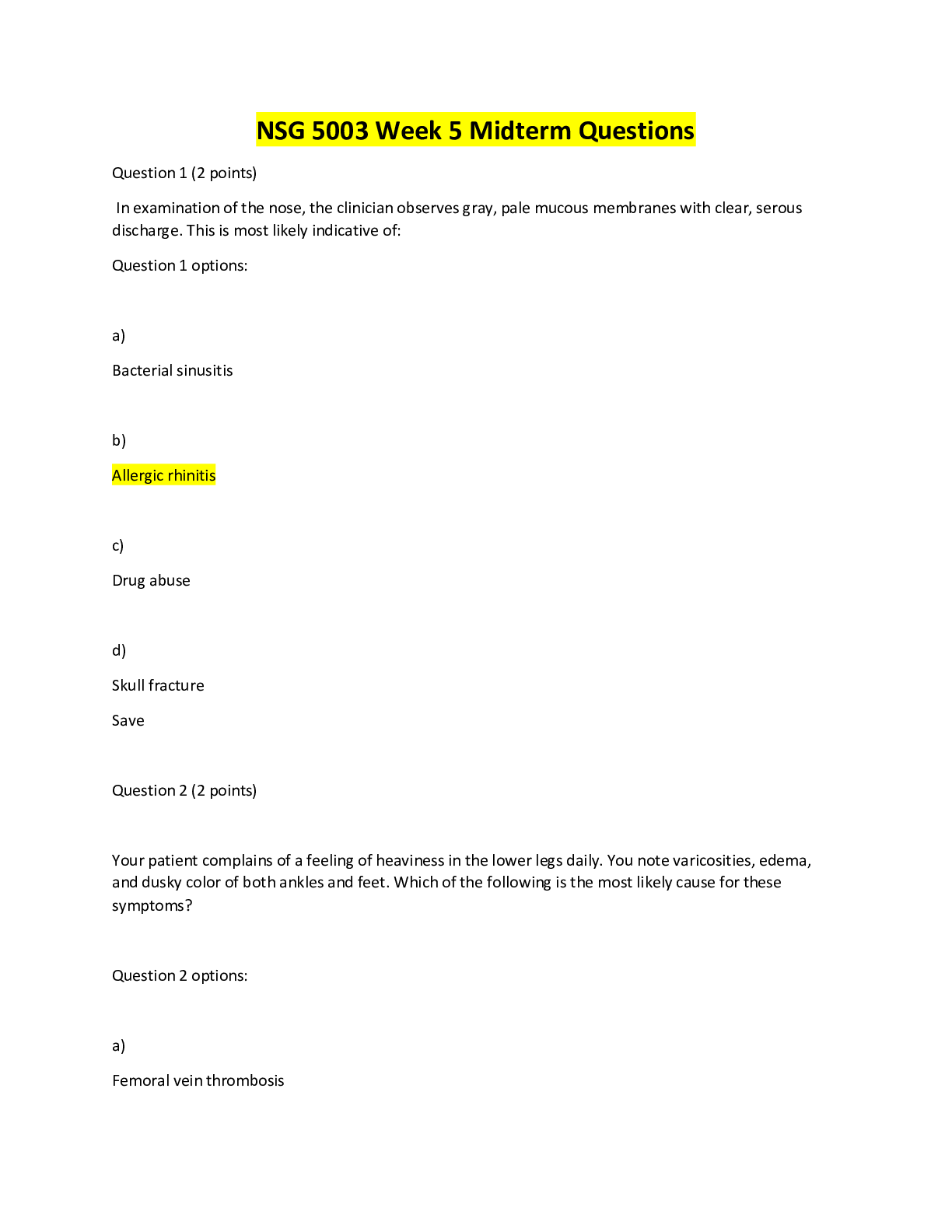Health Care > EXAM > ESSENTIAL HEALTH ASSESSMENT 7TH EDITION THOMPSON TEST BANK QUESTIONS WITH CORRECT ANSWERS (All)
ESSENTIAL HEALTH ASSESSMENT 7TH EDITION THOMPSON TEST BANK QUESTIONS WITH CORRECT ANSWERS
Document Content and Description Below
ESSENTIAL HEALTH ASSESSMENT 7TH EDITION THOMPSON TEST BANK QUESTIONS WITH CORRECT ANSWERS Chapter 1: Understanding Health Assessment 1. The World Health Organization (WHO) established a g... lobal strategy called “Health for All.” The goal for this strategy is: 1. All individuals to get the same health care throughout their life spans. 2. The government to supply money to care for all the people in the world. 3. Resources for health care to be evenly distributed and accessible. 4. Health-care providers can never deny patients health care. 2. Health assessment is a foundational and priority nursing skill. This essential skill requires registered nurses (RNs) to: 1. Diagnose and treat patients. 2. Identify normal and abnormal findings. 3. Refer patients with abnormal findings. 4. Counsel patients with psychosocial needs. 3. You are assessing a patient with five gunshot wounds on a trauma unit. There is a police presence outside his door because the patient is a known drug dealer in the community. You know that nurses must treat all patients as persons. This is called: 1. Caring. 2. Holistic process. 3. Person-centered care (PCC). 4. Standards of care. 4. The science-based framework updated every 10 years by the U.S. Department of Health and Human Services that has set national goals and objectives for health promotion and disease prevention is: 1. Healthy People. 2. Healthy People 2020. 3. U.S. Preventive Task Force. 4. World Health Organization. 5. A 38-year-old male has a family history of colon cancer. His father died of colon cancer at age 48. The doctor recommended that this patient have a colonoscopy this year. This is an example of: 1. Primary health prevention. 2. Secondary health prevention. 3. Tertiary health prevention. 6. A patient in the hospital puts on his call light and tells the person answering that he “thinks he is running a fever and has stomach discomfort.” You are the registered nurse in charge. What should you do? 1. Ask the medical assistant to go to the patient’s room and assess his complaints. 2. Go check to see if the patient has an order for Tylenol for a fever. 3. Page the resident on call immediately to assess the patient. 4. Go to the patient’s room and assess for fever and the epigastric discomfort. 7. You are leading an interdisciplinary team conference to discuss how to provide better care for a challenging patient who has behavioral problems. There are several areas that need to be problem solved and new ideas formulated to create an improved plan of care. What cognitive skills are you using? 1. Critical thinking 2. Clinical decision making 3. Intuitive thinking 4. Clinical reasoning 8. Best practice assessment techniques and instruments have been validated by: 1. American Nurses Association. 2. Code of Ethics for Nurses With Interpretive Statements. 3. Research and evidence-based practice. 4. Patient Protection and Affordable Care Act. 9. Health and illness are determined by many factors. What are the determinants of health identified by the Centers for Disease Control and Prevention (CDC)? Select all that apply. 1. Genetics and biology 2. Gender and occupation 3. Individual behavior 4. Social environment 5. Physical environment 6. Health services 10. The U.S. health-care system is evolving, and care is becoming more focused on which of the following? Select all that apply. 1. Wellness 2. Functional status 3. Disease prevention 4. Health promotion 5. Acute illness management 11. You are performing a health assessment on a 32-year-old female patient who reports “feeling fatigued all the time.” She states, “I have not had a physical in over 8 years because I did not have medical insurance.” The patient will be having a physical today. What will be part of the health assessment? Select all that apply. 1. Collecting data on past health 2. Collecting data on present health 3. Collecting data on significant other’s health 4. Assessing factors influencing health 5. Performing a physical examination 12. You are working with a patient as a copartner in care. The patient has multiple medical problems. Put the following steps of the nursing process in the correct order (1–5). (Enter the number of each step in the proper sequence; do not use punctuation or spaces. Example: 1234.) 1. Planning 2. Evaluation 3. Assessment 4. Implementation 5. Diagnosis 13. You are working on a medical surgical unit and are caring for a 24-year-old patient who is 3 hours post-op. The patient seems confused and restless since you assessed her an hour ago. You have a gut feeling that something is very wrong. This is an example of thinking. 14. The four techniques of health assessment include inspection, palpation, percussion, and . Answers 1. The World Health Organization (WHO) established a global strategy called “Health for All.” The goal for this strategy is: 1. All individuals to get the same health care throughout their life spans. 2. The government to supply money to care for all the people in the world. 3. Resources for health care to be evenly distributed and accessible. 4. Health-care providers can never deny patients health care. ANS: 3 Page: 1 Feedback 1. This is incorrect. “Health for All” does not mean that all individuals get the same health care throughout their life spans. 2. This is incorrect. “Health for All” does not mean the government will supply money to care for all the people in the world. 3. This is correct. “Health for All” means that resources for health care are evenly distributed and accessible to everyone. 4. This is incorrect. “Health for All” does not mean that health-care providers can deny patients health care. 2. Health assessment is a foundational and priority nursing skill. This essential skill requires registered nurses (RNs) to: 1. Diagnose and treat patients. 2. Identify normal and abnormal findings. 3. Refer patients with abnormal findings. 4. Counsel patients with psychosocial needs. ANS: 2 Page: 5-6 Feedback 1. This is incorrect. The role of the RN is not to diagnose and treat patients. 2. This is correct. Assessing patients and being able to identify normal from abnormal findings is an essential role of the RN. 3. This is incorrect. RNs in collaboration with the health-care providers do refer patients. This is not the essential and foundational role in health assessment. 4. This is incorrect. RNs do counsel patients, but it is not the essential and foundational role in health assessment. [Show More]
Last updated: 2 months ago
Preview 1 out of 333 pages

Buy this document to get the full access instantly
Instant Download Access after purchase
Add to cartInstant download
We Accept:

Reviews( 0 )
$17.00
Document information
Connected school, study & course
About the document
Uploaded On
Apr 09, 2024
Number of pages
333
Written in
Additional information
This document has been written for:
Uploaded
Apr 09, 2024
Downloads
0
Views
10

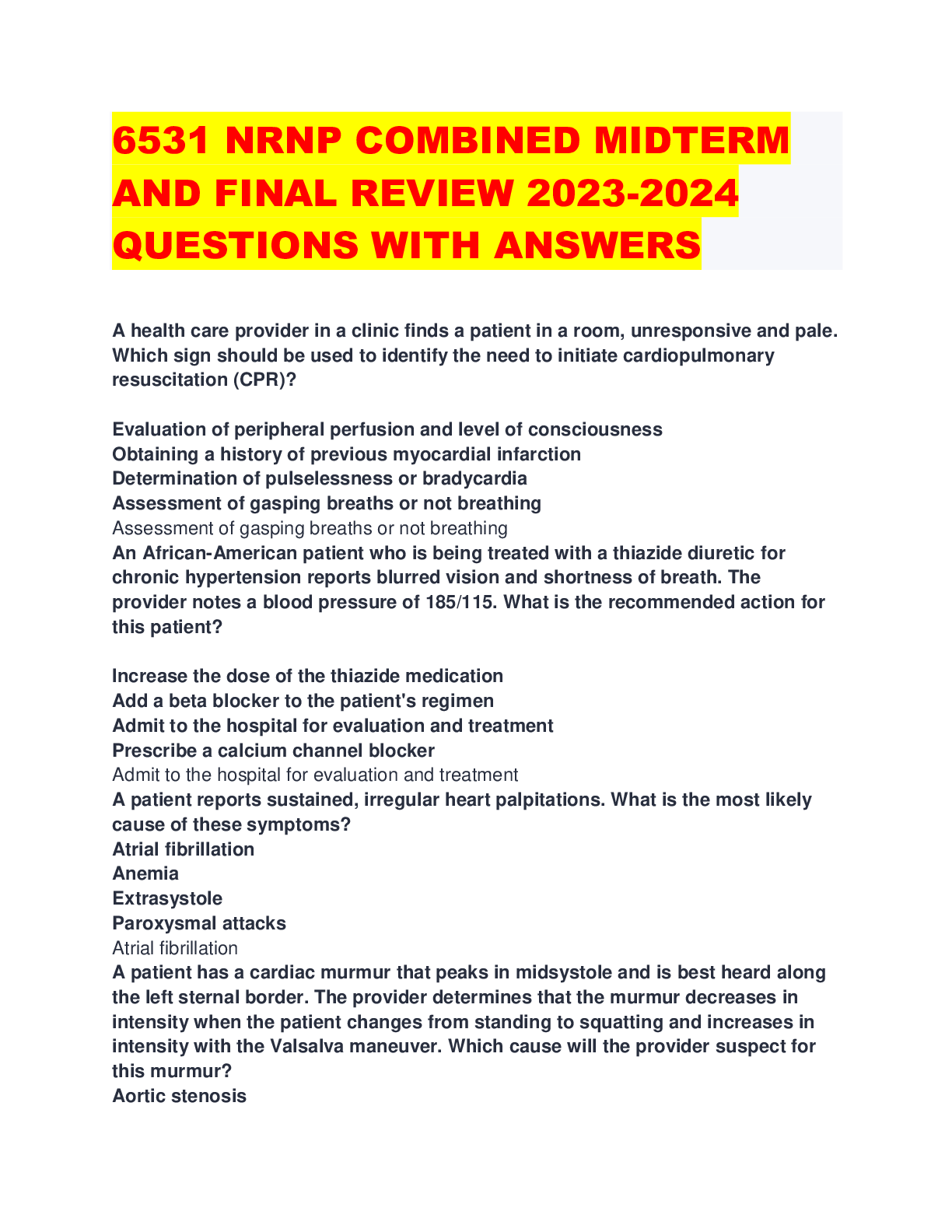
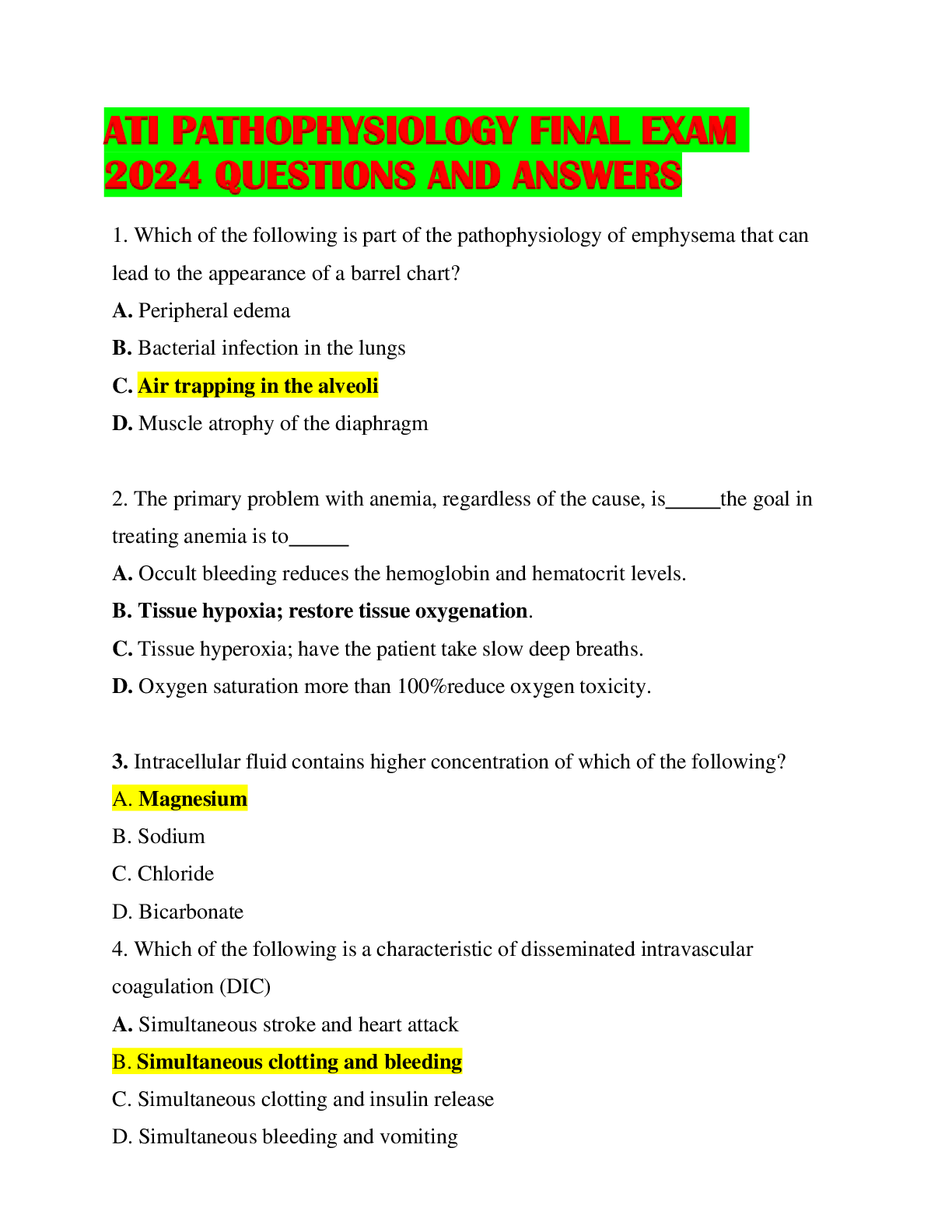
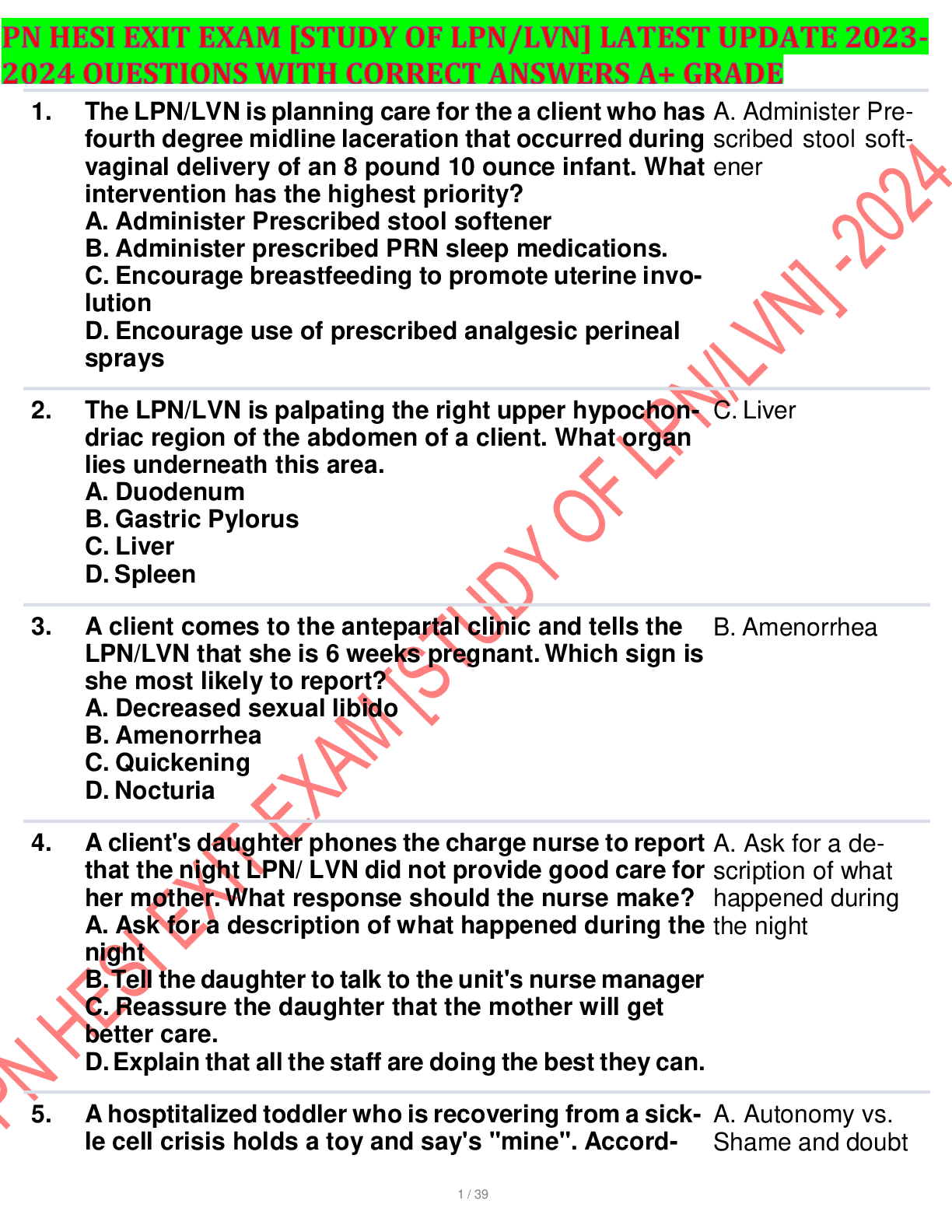
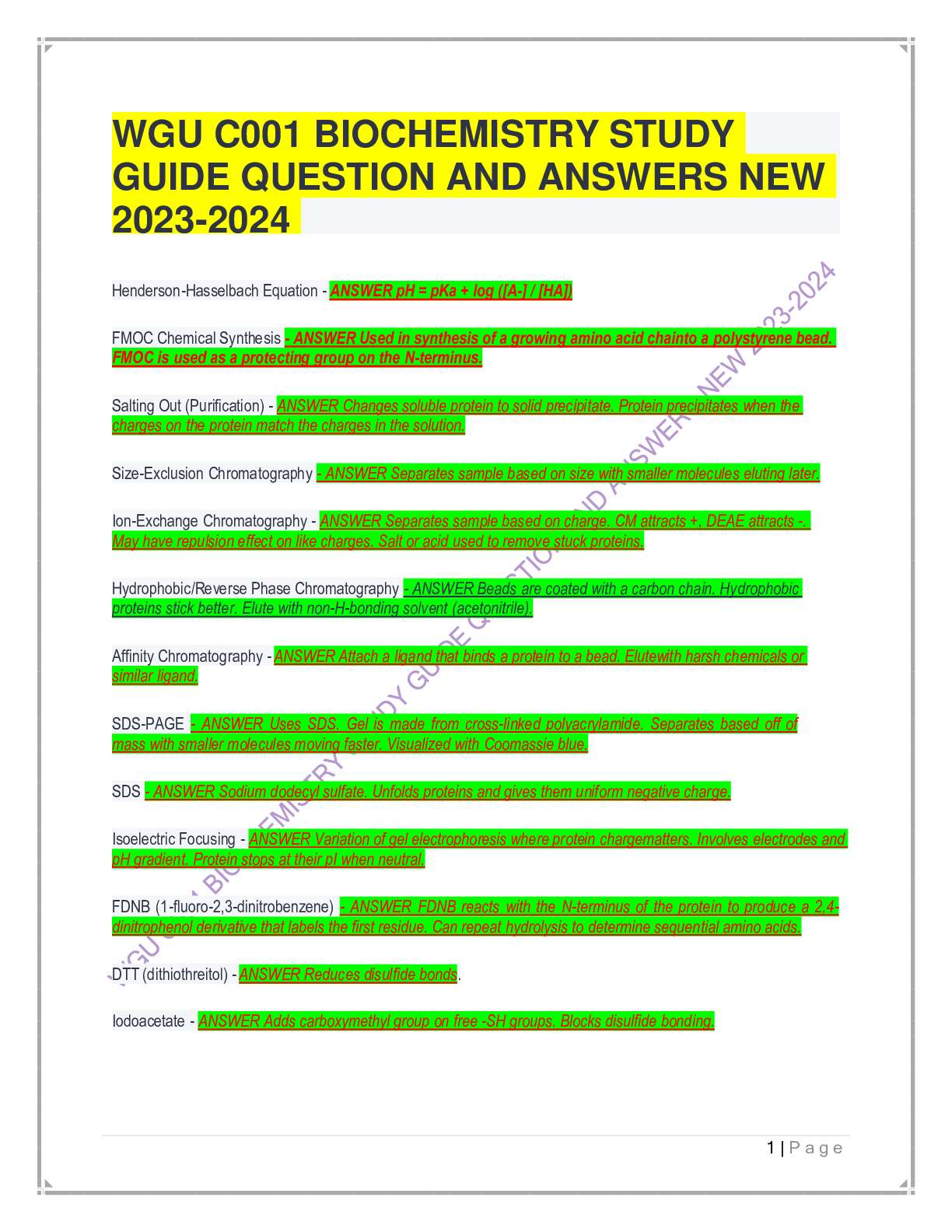
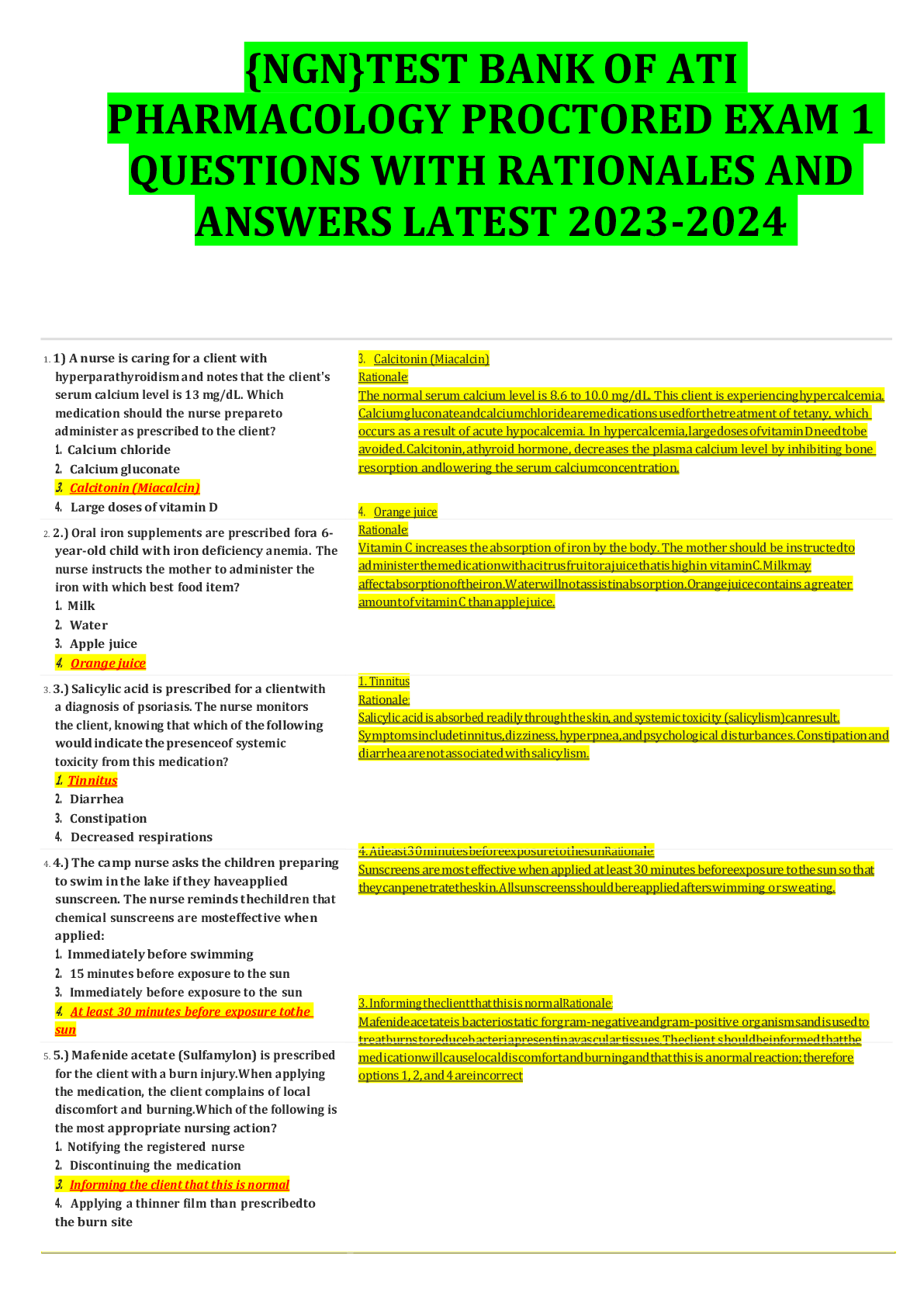

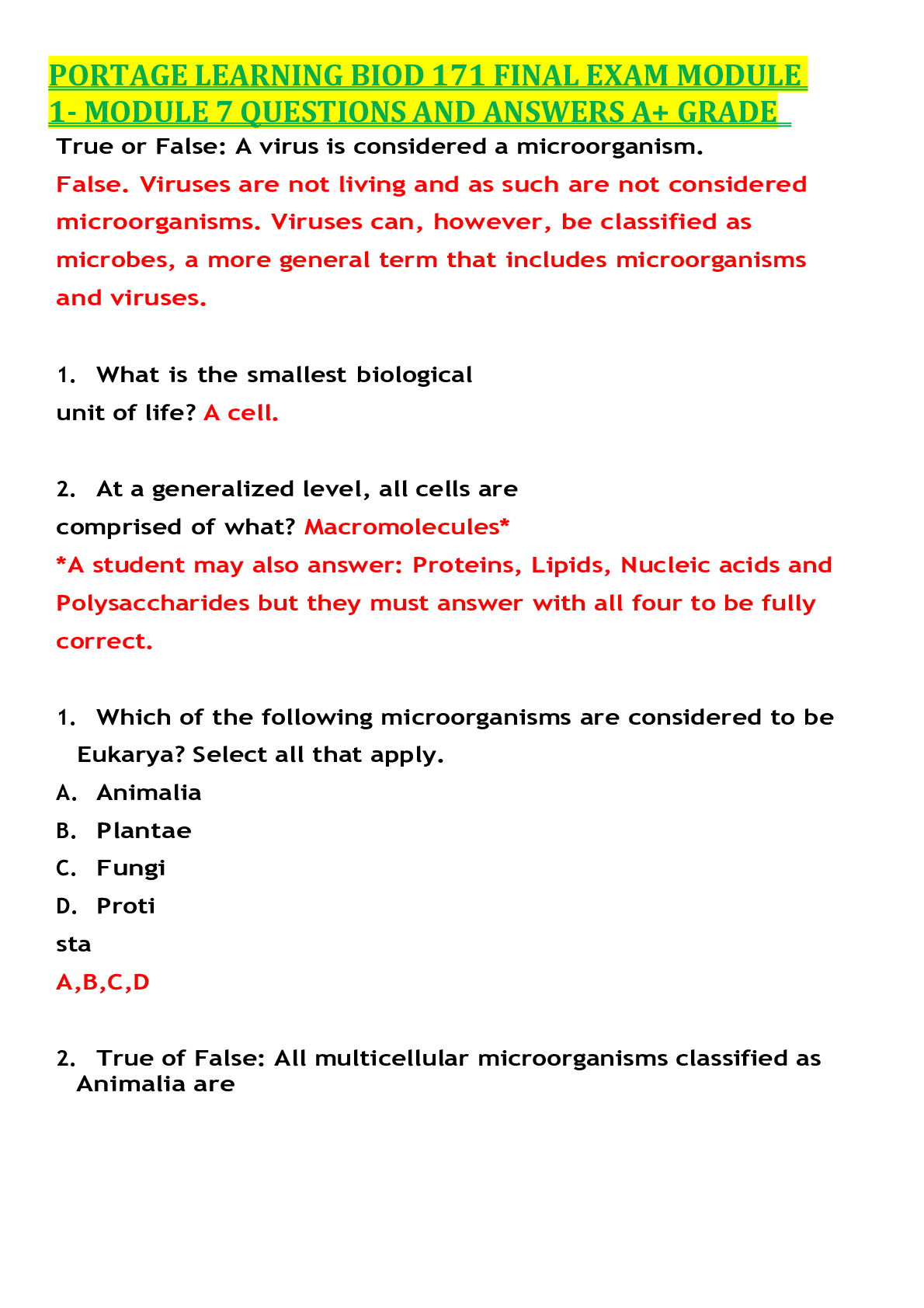

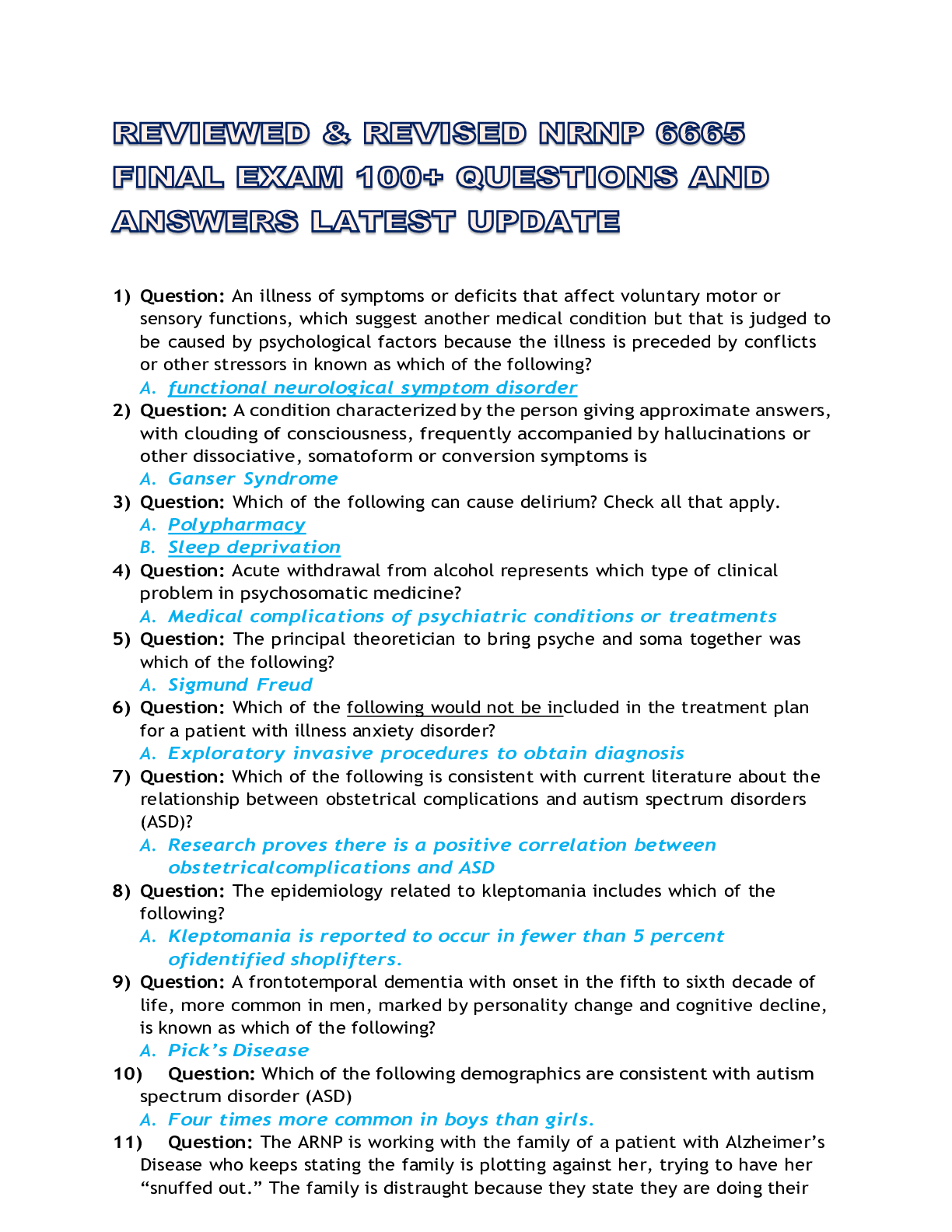

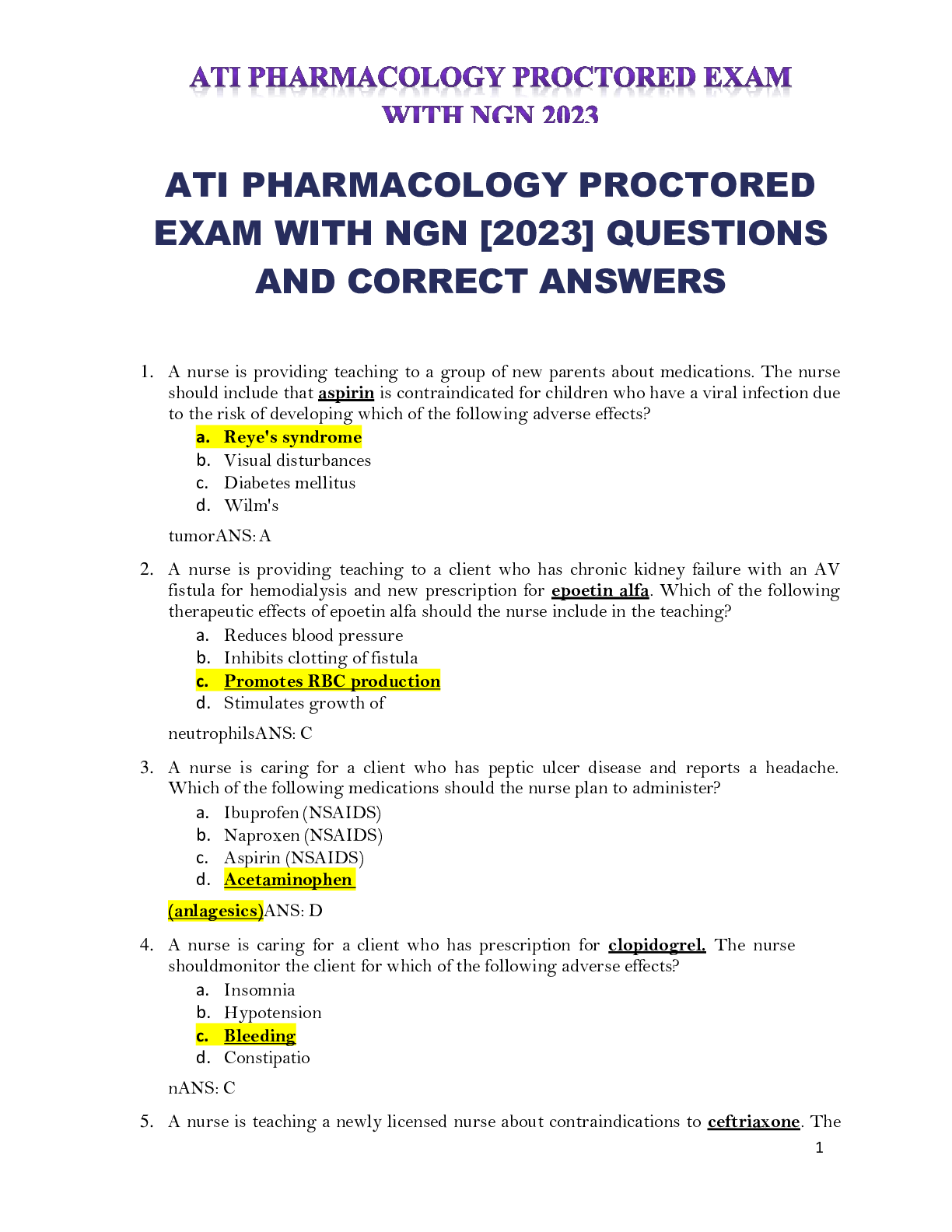



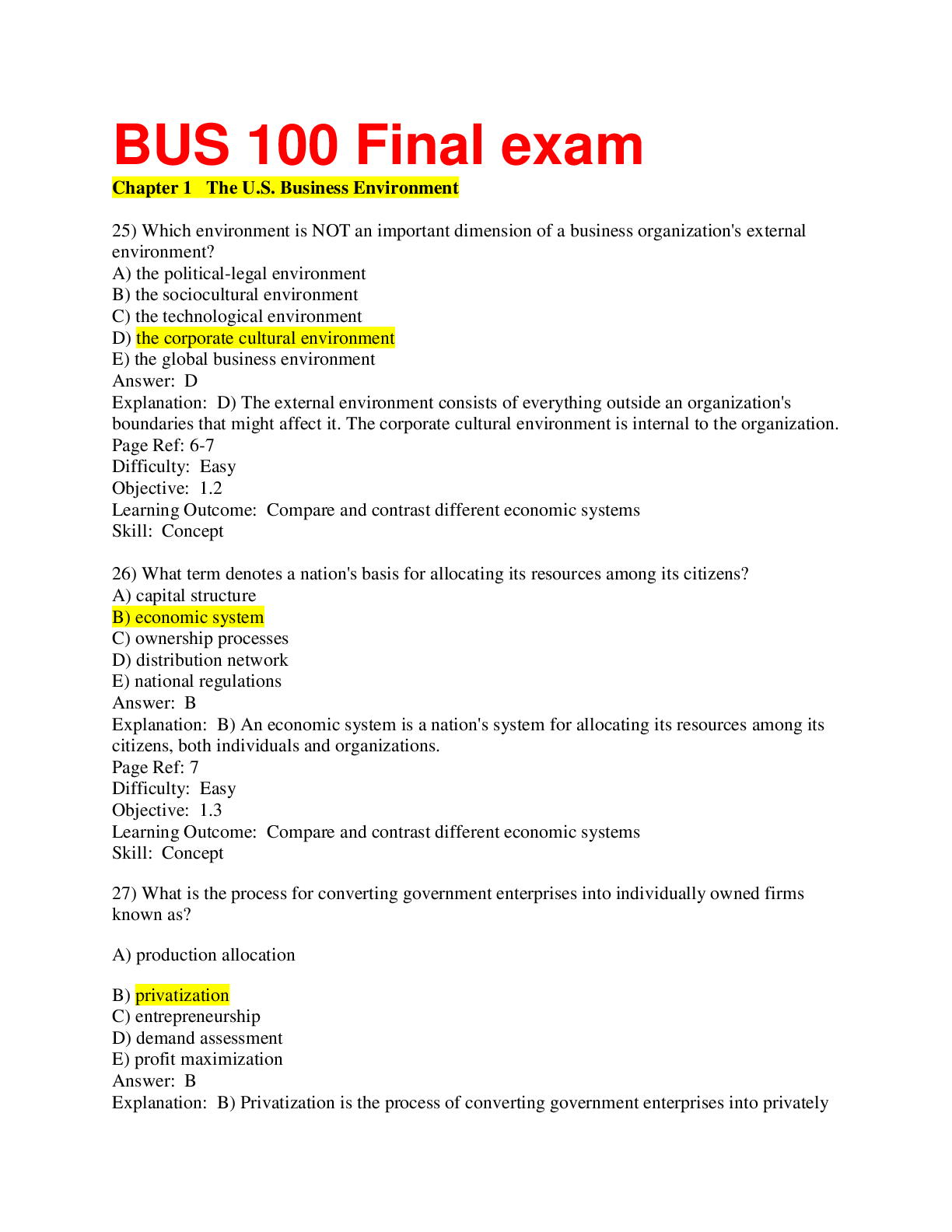
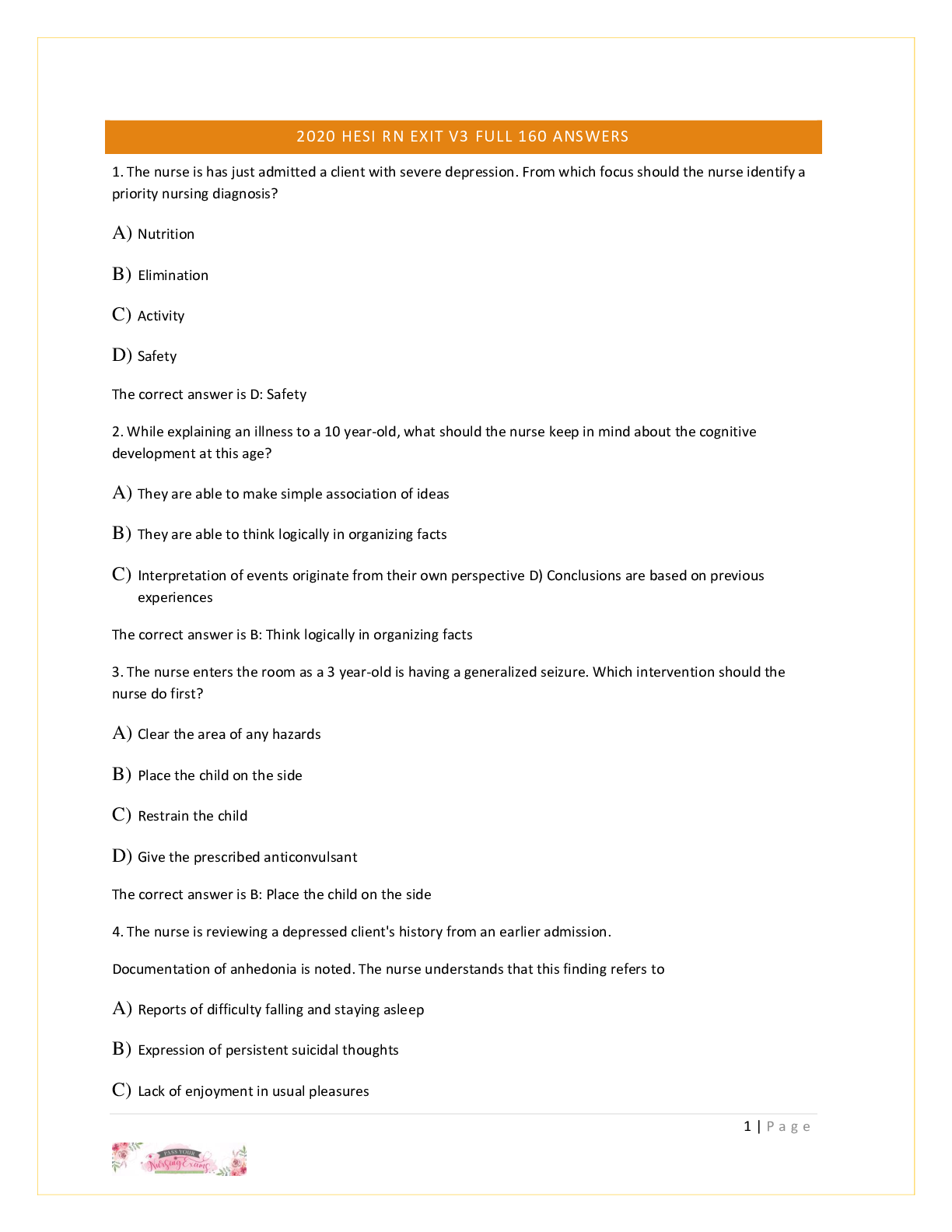
.png)


.png)



